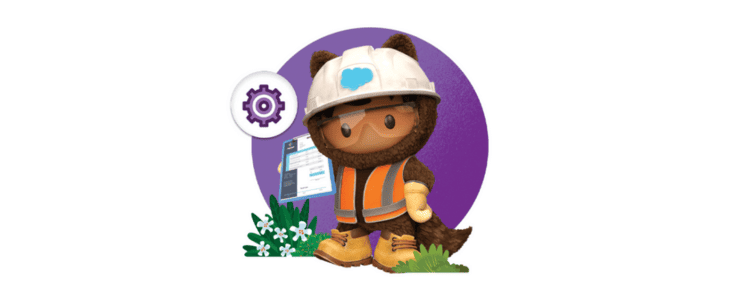Blog

Integration Solutions: The enosix Difference
Get real-time access, 70% to 90% faster integration, and unmatched scalability.
Every enterprise that works with multiple systems and cross-functional teams at some point realizes the need to integrate these systems to speed up delivery and provide the best customer experience. A good integration solution also brings collaboration, increases productivity, and provides valuable insights that contribute to profitable business decisions.
There is a wide range of data integration solutions, and a poor solution will affect not only your business performance but could become a reason for its failure. The risks are high – according to a study by Vanson Bourne, businesses in the US and UK lose over $140 billion annually because of poor data integration investments.
This makes the selection of your integration vendor a critical business concern. Let’s break down the advantages and disadvantages of the four different types of integration to better understand how to compare, evaluate, and select the best method for your business, and what makes the enosix solution different from our competitors.
How enosix approaches data-level integration
Data-level integration focuses on moving data between applications with the objective of sharing the same data among different applications. This is often the starting point when a company begins working on system integration.
It’s moving data from one system to another that’s shared with other information consumers.
This method has a low cost and low risk profile, and the data is already in a consuming system, but your business processes remain siloed and data becomes stale quickly.
Considered an “old school” method, it’s quite simplistic to take information from one system and push it to another, and it’s done by companies like MuleSoft, Boomi, and Jitterbit.
The problem with application integration
This method focuses on shared functionality, using business logic rather than simply pure data, as in the data-level method. Application integration is usually achieved through the use of application programming interfaces (API).
The pros of application integration include:
- data is available from nearly anywhere
- process results can be called and returned
- APIs can be re-utilized by other APIs or consuming systems.
However, this solution takes a lot of up-front work designing APIs. Another problem is API management; it’s difficult to tell what’s happening behind the scenes. Which backend system or functionalities are occurring? It’s tedious to figure out where information is coming from.
There are also issues with authentication and authorization. It’s limiting on the front end for users because one API can’t access another API if it has to pass a user token unless the other API has a system token it can pass along. If the token isn’t passed, there’s no way to know where requests originated and who entered the information into the system.
enosix does not do this type of integration.
Business process integration solves many legacy system problems
Business process integration is something enosix does really well. It enables non-compromised support for business processes where existing solutions take part in distinctive steps, exposing the functionality as abstractions of business methods through interfaces.
Most companies look at the breadth of business processes rather than the depth, but not enosix.
Processes exist, and business process integration basically provides a linkage of several processes into a chain. This makes it ideal for established companies that have been operating for some time with a lot of information in a particular system that has to be accessed in a certain way, with processes that can’t be used out of that system for one reason or another.
With this type of integration, results come from a known, working process. But rewriting processes would present a lot of risk and be far too costly. enosix decreases this risk to achieve the same business process outcome by utilizing backend process from a front-end perspective.
There are a few potential issues with this method, but unlike our competitors, we’ve solved those problems with patented technology that removes much of the complexity
- Applications that must migrate because they are nearing end of life or support: When is the right time to move them over? Changes will happen over time, is now the right time? This is something to think about when formulating your integration strategy
- Proprietary language from source systems: It’s harder to onboard developers from that, but these systems still have to be maintained during integration. So, resources to maintain them have to be considered – who will be the expert on those processes? enosix will utilize the business systems that exist within the back end of the ERP or whatever system we are integrating with.
- Potential domain knowledge requirements: Applications or functions have been written within a backend system and accessing this information or process becomes a black box when you’re from afar. There’s a known, working, functional object, but if an error occurs in integration, it requires a subject-matter expert. People leave and things change, so having someone who knows that system is important.
Presentation integration provides a seamless user interface
Presentation integration results in an integrated system that provides a unified presentation layer through which the users can access the functionality of the integrated system. Because they use the newly developed presentation layer, they are not aware of the diversity of existing applications executing in the background.
This method provides a better, more unified user experience. Instead of attempting to transform and migrate some data into the consuming systems and then present it natively within that system, this integration method interacts with the destination system in a more user-friendly way.
However, several UIs often have to be maintained because a subset of users still work with them, and this leads to resource constraints because systems are often compromised for convenience. Potential system-specific logic means users have to be trained in domain knowledge of back-end systems.
enosix is different from other integration solutions
All integration methods are not created equal, and neither are integration providers. At enosix, we know that integrating data is not the same as integrating processes.
We have true real-time access and both custom and prebuilt components. We’re all about scalability and reusability. We have the same capability for data integration with SAP, we allow re-use of existing and tested functionality, we’re process-oriented with pre-built visualizations, and all integration is native and tested on both sides of the integration.
enosix takes the complexity out of SAP integration to let you get up and running 70% to 90% faster than competing approaches. Yet we still provide secure, scalable, reliable connections between your front-end systems of engagement and your SAP ERP core. Schedule a demo today to see the enosix difference.


